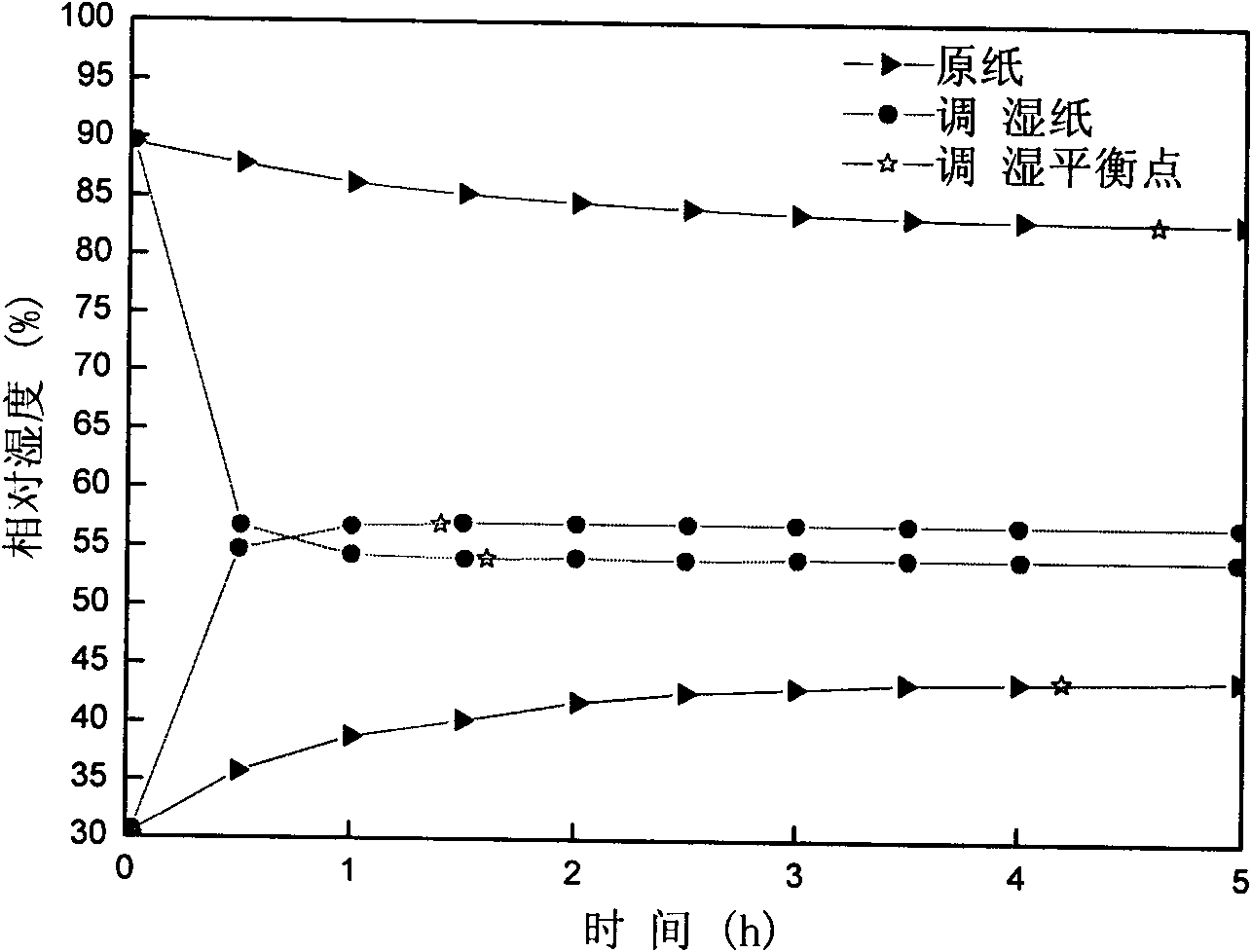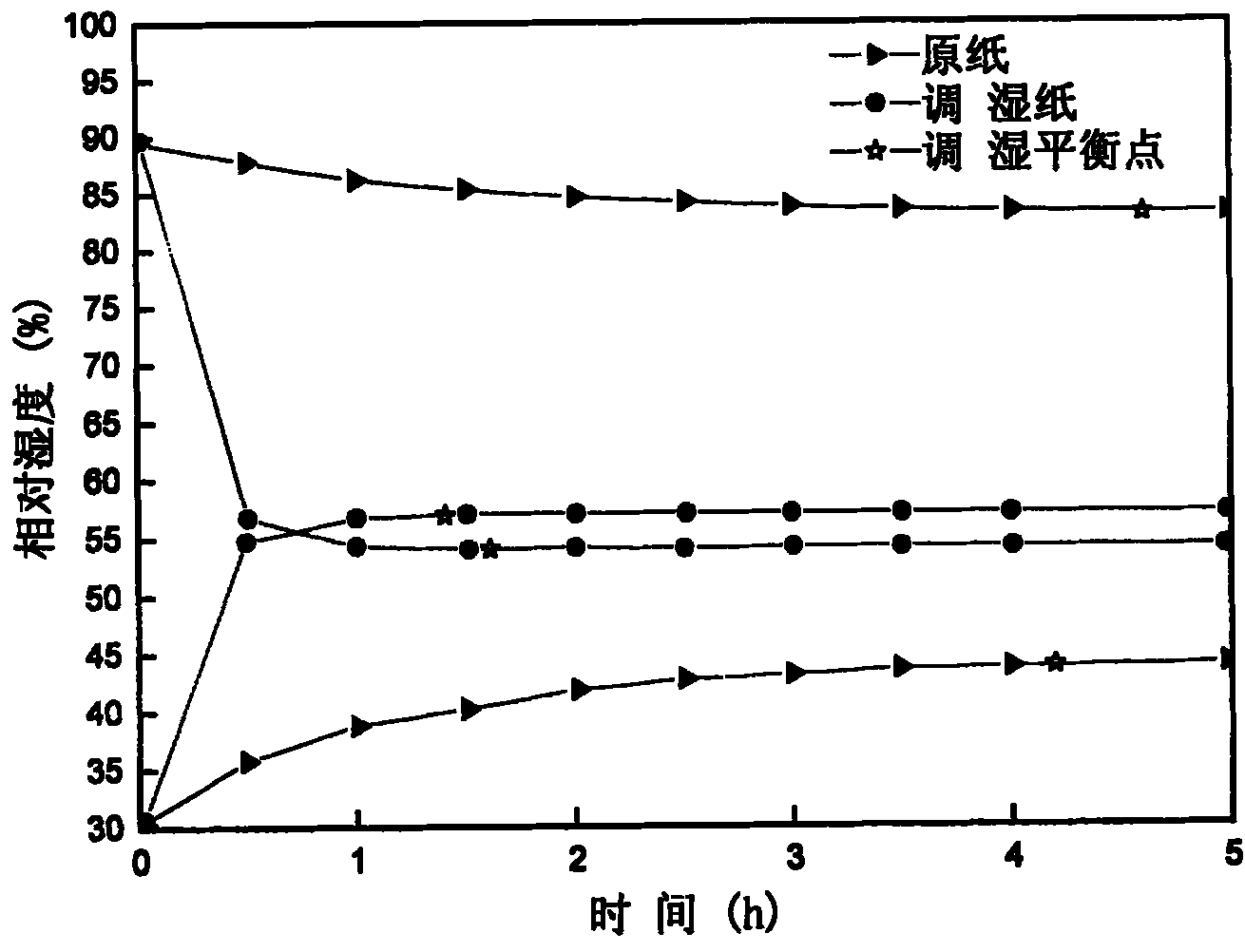Method for preparing high-efficiency composite humidifying paper
A high-efficiency technology for moisture-conditioning paper, applied in special paper, paper, papermaking, etc., can solve problems such as unfavorable packaging use, loss of raw materials, uneven distribution of sepiolite, etc. Effect
- Summary
- Abstract
- Description
- Claims
- Application Information
AI Technical Summary
Problems solved by technology
Method used
Image
Examples
Embodiment 1
[0016] A preparation method of high-efficiency composite humidity-conditioning paper is characterized in that the following steps are adopted:
[0017] A) Get 15 parts of dry pulp by mass parts, 10 parts of acrylamide, 5.5 parts of sodium polyacrylate, 5.5 parts of carboxymethyl cellulose, 7 parts of sepiolite with a particle size of 100 mesh, 0.08 part of potassium persulfate, 0.015 part of N , N′-methylenebisacrylamide, added to 100 parts of water, and stirred and reacted for 5 hours at a temperature of 80° C., to obtain composite pulp;
[0018] B) dissociating the composite pulp in a fiber disintegrator to obtain pulp raw materials;
[0019] C) Paper pulp raw materials are directly made in a paper machine and dried to obtain high-efficiency composite humidity-controlling paper.
Embodiment 2
[0021] A preparation method of high-efficiency composite humidity-conditioning paper is characterized in that the following steps are adopted:
[0022] A) Get 20 parts of dry pulp by mass parts, 10 parts of acrylamide, 5.5 parts of sodium polyacrylate, 5.5 parts of carboxymethyl cellulose, 7 parts of sepiolite with a particle size of 100 mesh, 0.08 part of potassium persulfate, 0.015 part of N , N'-methylenebisacrylamide, added to 100 parts of water, at a temperature of 70 ° C, stirred and reacted for 4 hours to obtain composite pulp;
[0023] B) dissociating the composite pulp in a fiber disintegrator to obtain pulp raw materials;
[0024] C) Paper pulp raw materials are directly made in a paper machine and dried to obtain high-efficiency composite humidity-controlling paper.
Embodiment 3
[0026] A preparation method of high-efficiency composite humidity-conditioning paper is characterized in that the following steps are adopted:
[0027] A) Get 25 parts of dry pulp by mass parts, 10 parts of acrylamide, 5.5 parts of sodium polyacrylate, 5.5 parts of carboxymethyl cellulose, 7 parts of sepiolite with a particle size of 100 mesh, 0.08 part of potassium persulfate, 0.015 part of N , N'-methylene bisacrylamide, added to 100 parts of water, at a temperature of 60 ° C, stirred and reacted for 3 hours to obtain composite pulp;
[0028] B) dissociating the composite pulp in a fiber disintegrator to obtain pulp raw materials;
[0029] C) Paper pulp raw materials are directly made in a paper machine and dried to obtain high-efficiency composite humidity-controlling paper.
PUM
| Property | Measurement | Unit |
|---|---|---|
| strength | aaaaa | aaaaa |
Abstract
Description
Claims
Application Information
 Login to View More
Login to View More - R&D
- Intellectual Property
- Life Sciences
- Materials
- Tech Scout
- Unparalleled Data Quality
- Higher Quality Content
- 60% Fewer Hallucinations
Browse by: Latest US Patents, China's latest patents, Technical Efficacy Thesaurus, Application Domain, Technology Topic, Popular Technical Reports.
© 2025 PatSnap. All rights reserved.Legal|Privacy policy|Modern Slavery Act Transparency Statement|Sitemap|About US| Contact US: help@patsnap.com


